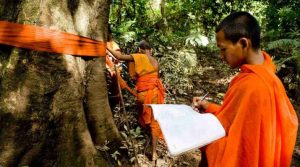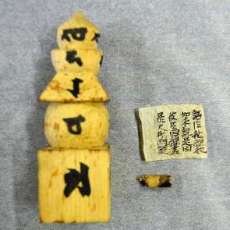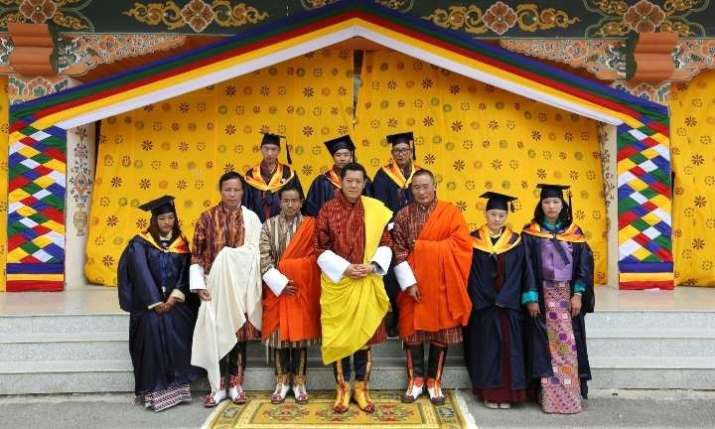
I am Ani Rigzin Lhamo, a Buddhist nun from a middle class family in eastern Bhutan. In this article I would like to share the story of my journey toward Sowa Rigpa—what it means, how it came to Bhutan, and how I got where I am today.
My mother gave birth to 11 children—eight boys and three girls—of whom I am exactly in the middle, the sixth child. I feel I am the most fortunate among my siblings since I was able to become a nun and study the Dharma. When I was young, my parents sent me to the regular school in my village, which was 30 minutes’ walk from my home. As a young student in my early teens, I had three ambitions: my first aim was to be a nurse, the second to be a teacher, and the third to become a nun. Today, I feel so lucky that I have been able to fulfill all three goals in a single lifetime!
Of my 10 siblings, three of the older children never went to school. Thus, I feel responsible for supporting them and giving back since their sacrifices enabled my education, and the credit for who I am today goes to them as well. Both of my parents, who are now in their late 70s, live with me and I am grateful that I am able to take care of them.
Each evening before we children went to bed, my uncle, who was a lay monk (gomchen), would tell us stories about death. He used to say that if we followed the Dharma, it would help us when we die. He used to show us how to recite mantra, Om Mani Padme Hung, and teach us the importance of helping others, the importance of one’s human life, and the impermanence of life. I have known since I was very young how to recite mantras and my intention has always been to follow the Dharma.
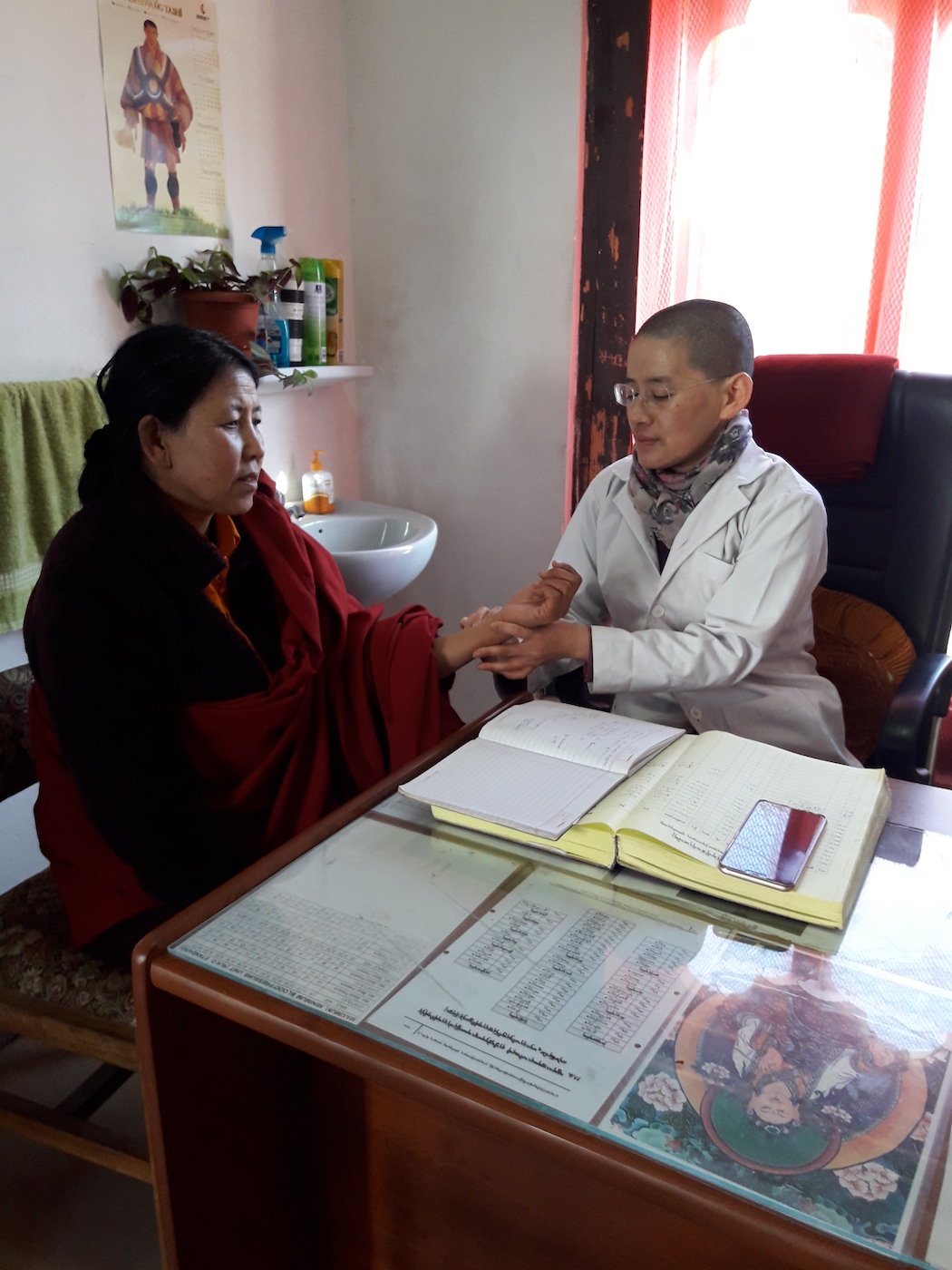
As a youngster, I would help older people who were unable to walk, and a group of us students used to clean the footpaths of the village, which we believed would help us when we die since it could generate good merit. Being born in a Buddhist country, we are always reminded of death by our elders and teachers. Therefore, every action is intended to discipline oneself to do something good for ourselves as well as for others. That is how I was inspired to become a nun. My uncle was another of my main inspirations to become a nun. Unfortunately, he passed away before I completed my monastic education, but he was very happy just for the fact that I became a nun before he died. I know he would have been very proud if he had seen my overall achievements.
I attended regular school until ninth grade, and in 2000 I traveled to Bodh Gaya in India, where I met His Holiness Gangteng Trulku Rinpoche. There were 13 nuns with him at that time and I then decided to become nun under his guidance at Pema Choling Nunnery. I was 19 years old. At Pema Choling Nunnery, I completed a master’s degree in Buddhist philosophy in 2010. After graduation, I taught the junior nuns for a year in the same nunnery. Since I had a passion for studying traditional medicine, I then applied to the Bhutan Nuns Foundation (BNF) for financial support to study traditional medicine in Bhutan for five years. With considerable difficulty, I completed my medical studies and I am now working with the BNF and partly with Department of Traditional Hospitals in the capital Thimphu, where I now practice what I learned over those five years.
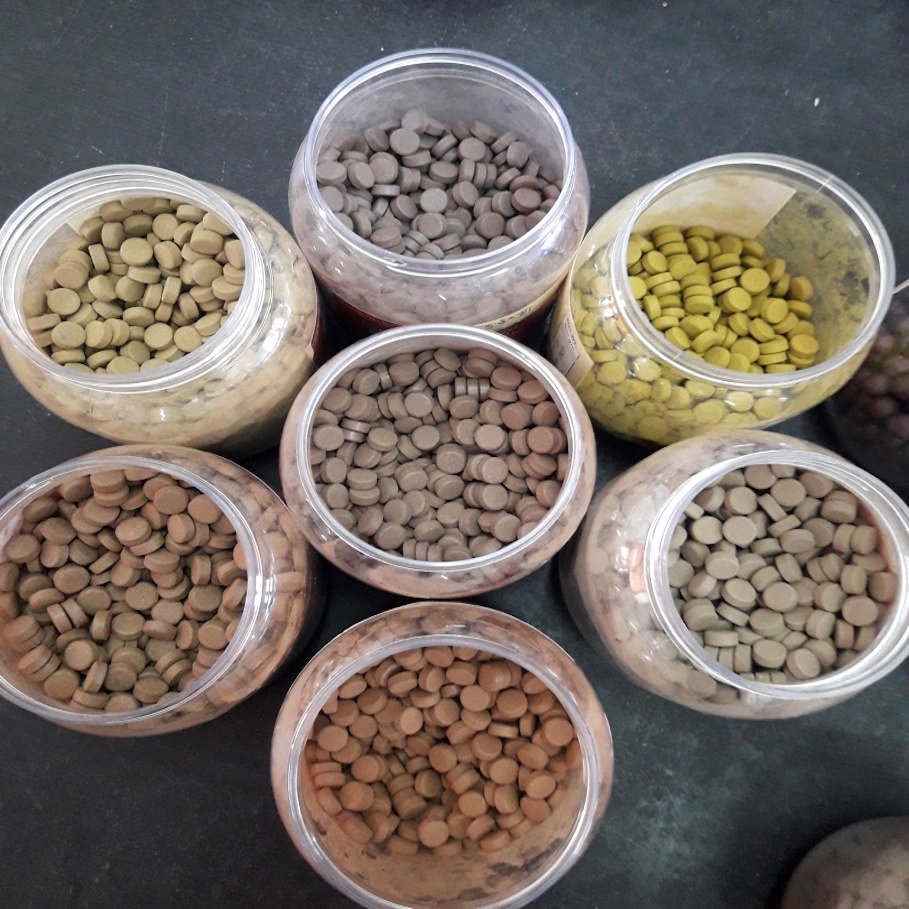
What is Sowa Rigpa? And who introduced Sowa Rigpa to Bhutan?
The traditional medicine system of Sowa Rigpa, popularly known as nangpai men (Buddhist medicine) in Bhutan, is based on the Volumes of the Four Tantras (rGyud-bZhi). The Four Tantras were propounded by the Lord Buddha, manifesting as the Medicine Buddha in the Celestial Palace called Drong Khyer Tana Dug.
Sowa Rigpa is believed to have first come to Bhutan in the eighth century with the arrival of Guru Rinpoche (Skt: Padmasambhava) in Bumthang. To briefly narrate about how Guru Rinpoche came to Bhutan, the country in those days did not have a proper ruler, so each region was ruled by its own head of state. In Bumthang, there was a king called Sindhu Raja. During his time, there were often fights and internal conflicts due to the lack of the Dharma. Sindhu Raja waged a war with an Indian king called Naochhey. Naochhey defeated Sindhu Raja in battle, killing his son, Tagla Mebar, and turning the place into a slaughterhouse full of blood and dead bodies. Sindhu Raja was extremely upset and lashed out at the local protector Shelging Karpo by making unclean and offensive offerings. The enraged local protector then took away the lifeforce of Sindhu Raja, who fell critically ill. No medication or religious efforts (bonchoe) could cure him. Finally, one of his ministers decided to seek the help of Guru Rinpoche, who accepted the invitation and visited Bhutan. Guru Rinpoche subdued the demon and restored the life of the king. Even today, in Bumthang Kurjey Temple, one can see the cave where Guru Rinpoche meditated and left his body prints.
King Sindhu Raza was very happy and offered his daughter Monmo Tashi Khyiuden to Guru Rinpoche as consort. From then on, Guru Rinpoche taught the Dharma to the people and blessed the holy water, which we can still see today. Guru Rinpoche also blessed all the herbs and many natural hot springs (tsachu and menchu) in Bhutan to help to treat different types of diseases. From that time on, local healers in each village treated the sick with herbs and other therapies. And each year, throughout the country, the people of Bhutan still take hot spring baths and hot stone bath treatments for their health-giving benefits.
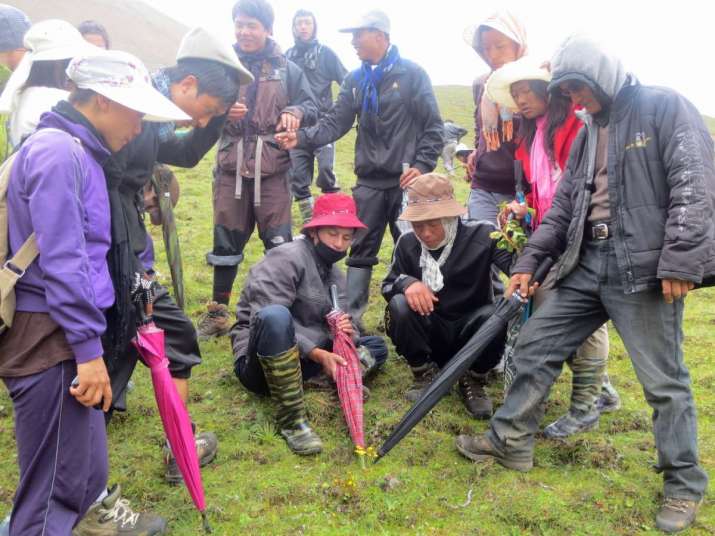
Guru Rinpoche’s consort Khandro Yeshi Tshogyel was practicing Vajrakilaya yoga in Singye Dzong, one of the secret places blessed by Guru Rinpoche, and today we can still see the rock that she used to grind various herbs. This is also one of the high-altitude areas where herbs grow and because of this, it was named Menlung Nang meaning that is one of Bhutan’s medicine places. Many masters, such as Guru Tseten Gyelthsen,Tertoen Kutsa Toenpa, and Tertoen Tshering Dorji, practiced herbal medical treatments around the Paro Valley. Sowa Rigpa was further consolidated after the arrival of Zhabdrung Ngawang Namgyal in 1616.
Bhutan itself is known as Drukyul Jong—Land of the Thunder Dragon—and Lho Men Jong—Southern Land of Medicine. Zhabdrung Rinpoche left Tibet and entered Bhutan through the high Himalayan passes in Lingzhi, one of the highest altitude settlements of Bhutan, some 6,000 meters above sea level. Zhabdrung Rinpoche also blessed many high-altitude herbs as medicines and named the place Drog Mentsi Lhayul Dhumra—Celestial Garden of Medicine. To this day, Lingzhi is one of the main sources of Bhutan’s high-altitude medicinal plants, which are collected each year to produce herbal medicines. It is believed that the sources are infinite because of the blessings of Zhabdrung Rinpoche. Low altitude plants are collected from southern Bhutan, which is 221 meters above sea level, while some unavailable herbs are imported from India.
From very ancient times, people in Bhutan have practiced herb-based medical and health treatments. Even today, traditional medical services, including local healers, are still available, practiced in combination with modern medical and healthcare services.
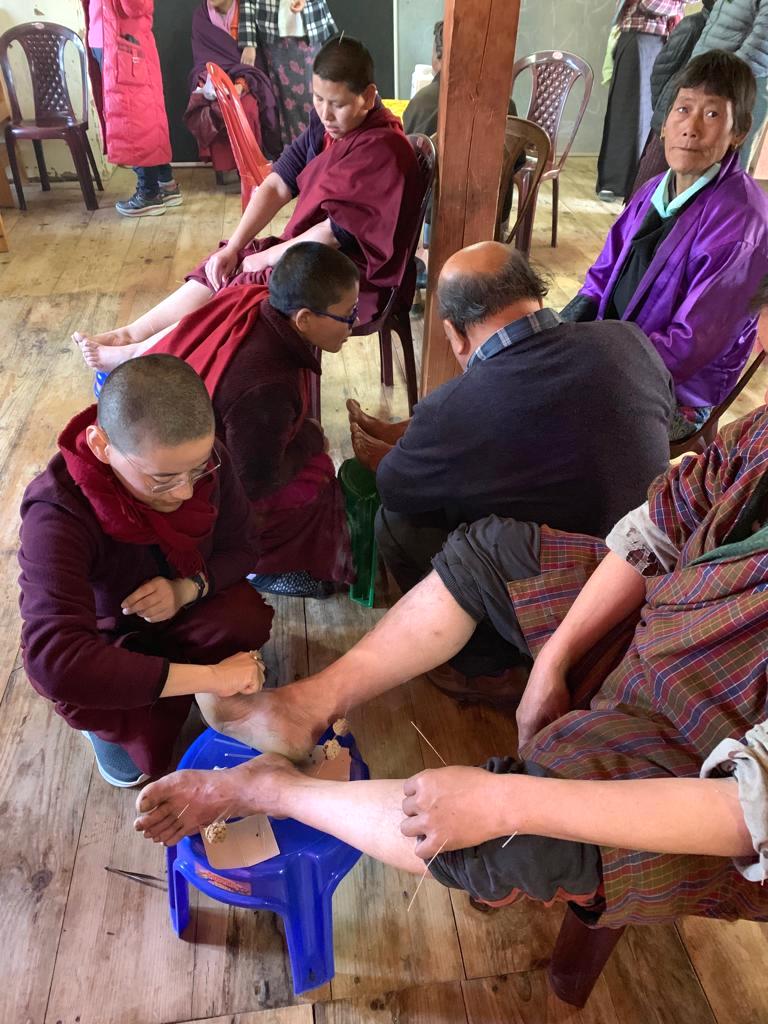
The formal development of Sowa Rigpa in Bhutan
In 1967, His Late Majesty the Third King of Bhutan, Jigme Dorji Wangchuck, commanded the Health Department to establish a traditional medicine system for the welfare of people. On 28 May 1968, the late Drungtso Pema Dorji, the late Thupten Lekpai Lodray (Ladhak Amchi), and Drungtsho Sherub Jordhoen started an Indigenous Medicine Dispensary in Dechenchholing, Thimphu. In 1971, a three-year diploma training program for menpas (traditional health workers) was launched, and in 1978, upon the command of His Majesty the Fourth King, Jigme Singye Wangchuck, a five-year bachelor’s degree program for drungtshos (traditional medicine doctors) was initiated. In 1979, the dispensary was upgraded to become the National Indigenous Hospital and relocated to its present site at Kawang Jangsa in Thimphu. Each of the 20 districts of Bhutan now has a traditional medicine hospital, with Grade I and Grade II Basic Health Units in the country also including traditional medicine units to provide Sowa Rigpa treatments.
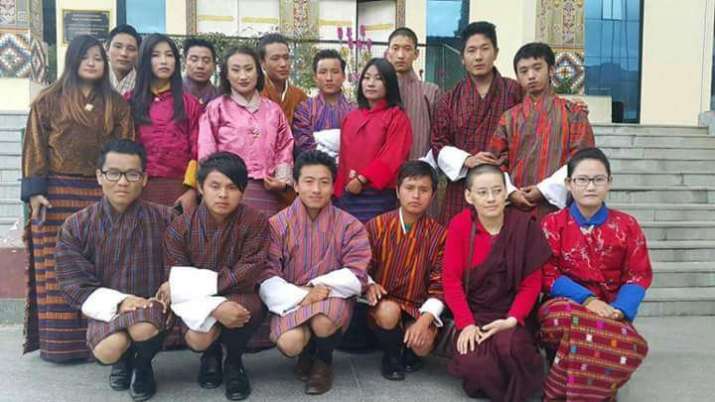
My journey toward Sowa Rigpa.
Being a nun with a spiritual background and religious training, I would like to share some of the personal experiences and challenges I faced on my journey to become a Sowa Rigpa practitioner. As I stated earlier, after ninth grade at the government higher secondary school in eastern Bhutan, I became a nun at the age of 19 and joined the Pema Chholing Buddhist Institute for Nuns, established by His Holiness Gangteng Trulku Rinpoche in central Bhutan. It was the first shedra in the country offering formal Buddhist philosophy studies for nuns, similar to the monastic studies pursued by monks. In 2010, I completed nine years of studies equivalent to a master’s degree and taught at the nunnery for a year.
In 2012, with an education scholarship from the Bhutan Nuns Foundation, I undertook Sowa Rigpa training for five years at the Gayser Gyalpo University of Bhutan in Thimphu. At that time, admission to the institute was only open to candidates who had certificates from the regular school system and not to nuns from nunneries. If it were not for the Bhutan Nuns Foundation’s support, I would never have had the opportunity to study Sowa Rigpa. Although the Royal University of Bhutan made it very difficult for me to get into the institute, with strong determination I was able to gain admission. They even made me sign an agreement that after I completed my training I would not seek employment under the Royal Government of Bhutan civil service system. It was disheartening, but I am grateful that I did not give up.
At first, I did not feel comfortable with the other younger students since I was already in my 30s, but fortunately, there was one other woman who was a similar age and we became good friends. Over time, I found my classmates to be very friendly and cooperative and that we all came from similar backgrounds.
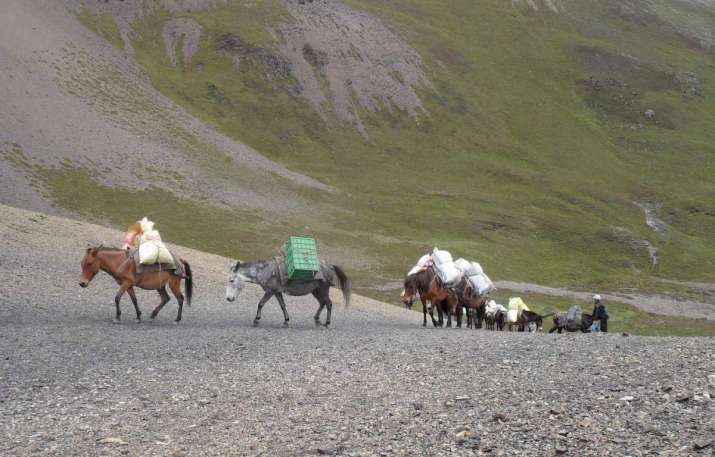
Sowa Rigpa tour.
During the first semester, we participated in an orientation tour to hospitals and hot springs (tsachu and menchu) in Gasa District and Chubur Tsachu in Punakha. It was interesting and so much fun to learn about the benefits of hot spring baths in different locales. The only challenge I faced during these trips was actually taking a hot spring bath. I did not feel comfortable removing my robes in front of the students and teachers for the first time because we nuns never normally mingle with other people, let alone bathe together! I really was extremely shy and wanted to disappear. Some of the other female students supported me and asked me to join them in the bathtub, which I appreciated very much.
In the third semester we had a study tour to identify high-altitude medicinal plants in Lingzhi. It was four days’ walk from the main road, but by that time I was comfortable wearing shirt and pants because in a robe it would have been too difficult to hike through the rain and across the muddy terrain. I felt very sorry for the horses who had to carry all our belongings and supplies, but they were necessary as there was no way we could have carried on our own luggage over such a difficult hike—as it was, we were hardly able to carry our own packed lunches and water. Each day we walked 8–9 hours identifying the medicinal herbs we found. I enjoyed the clean, fresh air, the beautiful scenery with different types of herbs and flowers, and the snow, ice, lakes, and streams that decorated our surroundings made it feel like we were in heaven.
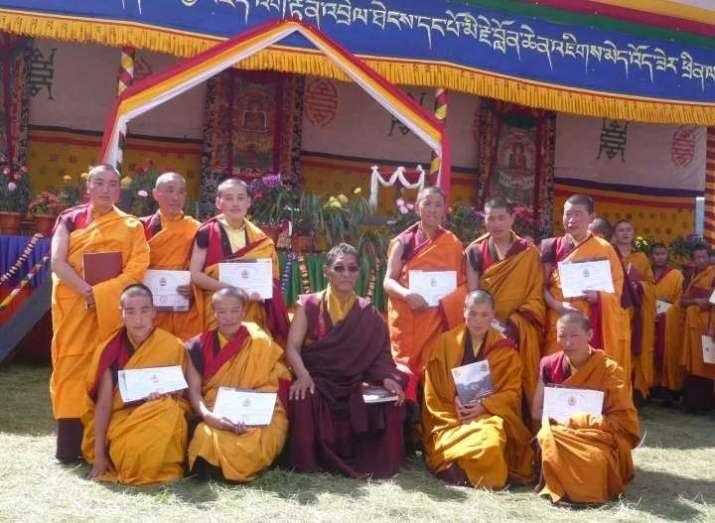
After spending 14 days in this mountain environment, we returned to the college and resumed our regular classes. There were eight of us in our class and we enjoyed learning about the various kinds of herbs that grow in Bhutan. By the end, we had become a wonderful team, very cooperative and supportive of each other—otherwise we would not have survived! I realized that for such adventurous activities, strong teamwork is hugely important.
Among our group of students were all kinds of people with different life experiences. Notably there were two guys who were older than the others, already mature and with families of their own. They were the most helpful and resourceful people to work with. We often shared time together, such as going for picnics and other fun activities, outside of our work-related tasks. Getting to know people better and working in a team makes life much easier and more enjoyable. Time seemed to pass rapidly, and before we knew it we were already in the seventh semester and it was time for a second high-altitude study tour in Lingzhi. This time, the junior students also accompanied us.
By the eighth semester, it was time to learn how to identify low-altitude medicinal plants. We went to southern Bhutan—Trongsa and Gelephug. Since it was autumn, the weather was quite moderate, but we were still required to walk 3–4 hours in the jungle to identify medicinal plants, trees, flowers, stones, and so many other things that are found in the lower altitudes. Within five years, we had learned the value of the rich flora and fauna of our country. I felt so grateful to have been able to undertake this precious journey.
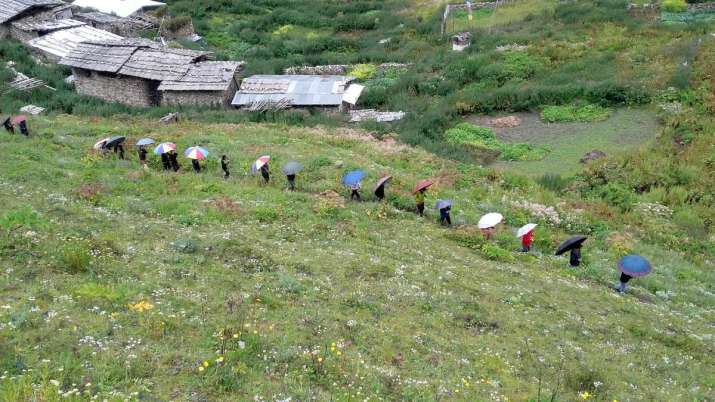
The Bhutan Nuns Foundation
At this point, I would also like to share a little about what Bhutan Nuns Foundation (BNF) is and how it benefits the nuns like me. The BNF is a non-profit organization working for the welfare of nuns in Bhutan. It was founded 10 years ago in 2009, under the patronage of Her Majesty the Queen Mother Tshering Yangdoen Wangchuck. The main goal of the BNF is “To reach the unreached”—especially nuns in far-flung corners of the country who desperately need support and encouragement as a source of empowerment and inspiration to gain exposure for their valuable work.
There are 30 nunneries in Bhutan, which are home to more than 1 per cent of the Bhutanese population. The BNF helps to improve basic living conditions in the nunneries and to educate the nuns, in collaboration with partners including government agencies, such as the Ministry of Health, UNICEF, and other organizations and individual supporters around the globe. The BNF also facilitates bringing international experts such as dentists and acupuncturist to visit the nunneries and treat the nuns. I have been fortunate to accompany some of these experts and to help provide treatment for the nuns. I have had the opportunity to learn more about the basic acupuncture points, which I am able to practice when needed. I also learned Reiki therapy, which I am now able to offer to nuns and other people in Bhutan, in addition to Sowa Rigpa treatments.
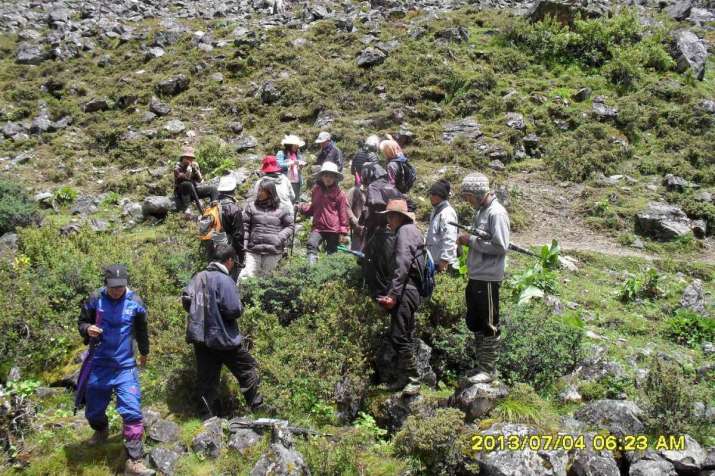
In my own experience, Bhutanese nuns are generally very shy and hesitant to share their problems with male or even female doctors. Nevertheless, as a nun myself, I find that they feel more comfortable discussing their personal health problems with me. It is on these occasions that I truly feel happy and realize that I have chosen the right path; I am able to help and be of service to others—especially the nuns of Bhutan.
After encountering many challenges, I eventually graduated in June 2017 and am now able to volunteer for three days each week at the National Traditional Hospital in Thimphu, while I am employed by the Bhutan Nuns Foundation to give back to society by visiting nunneries and treating nuns and residents of the neighboring communities. This has been such a rewarding experience since it is something I have always wanted to do after completing my training. With the BNF’s support, I intend to visit every nunnery in the country and help our nuns through the knowledge I have gained.
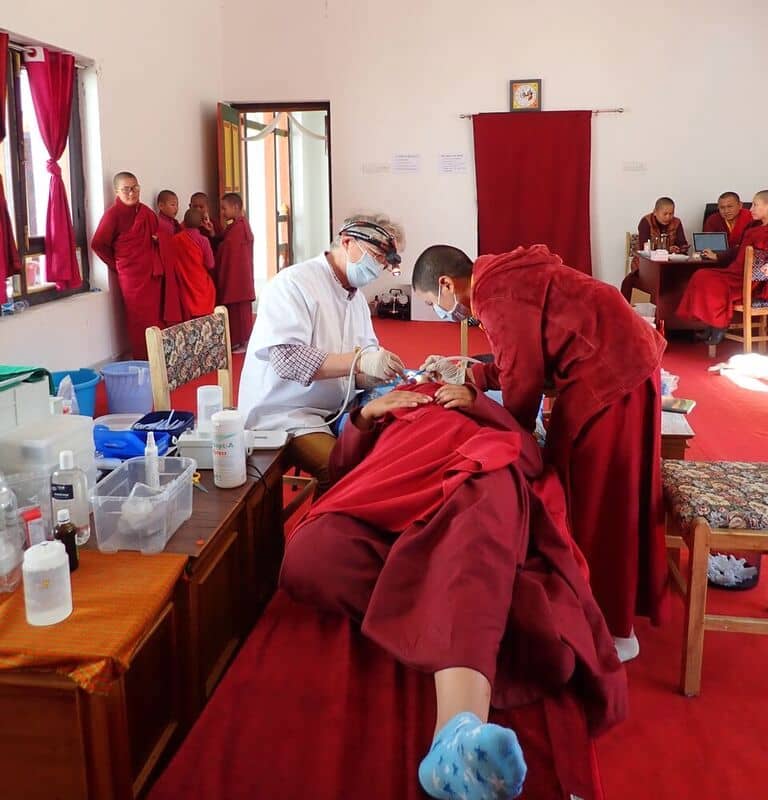
Image courtesy of the author
Conclusion
Traditional medicine or nangpai men has thus played a very important role and continues to contribute immensely to the good health and happiness of the people, particularly given the long history and rich culture of its practice in our society, with the blessings of the above-mentioned compassionate and enlightened masters and leaders. In practical terms, I personally feel that traditional medicine is one of the most sustainable systems of alternative healthcare as there is the capacity to develop human resources, and the raw materials can all be sourced within the country. I feel grateful and privileged to be a Sowa Rigpa practitioner who is able to be of service to others and particularly to have the opportunity to help those who are in need.
I would like to thank all those who have any affiliation with my achievements thus far. I thank my parents and siblings, my sponsors, my teachers for their support, my root guru His Holiness Gangteng Trulku Rinpoche for his blessings, and the Bhutan Nuns Foundation for their continued support. Last, but not least, I would like to thank BNF executive director Dr. Tashi Zangmo for inspiring me to study Sowa Rigpa as she has been instrumental in helping me reach where I am today.
Tashi Delek!
See more
The Bhutan Nuns Foundation
The Bhutan Nuns Foundation (Facebook)
The Bhutan Nuns Foundation (Twitter)







